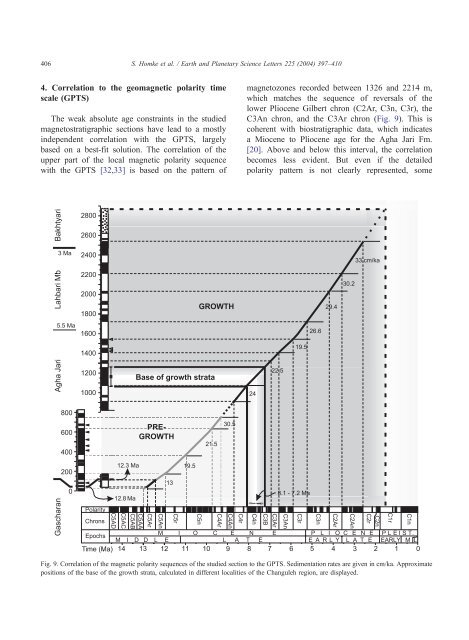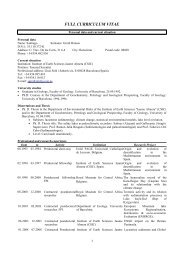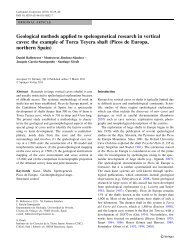Magnetostratigraphy of Miocene–Pliocene Zagros foreland deposits ...
Magnetostratigraphy of Miocene–Pliocene Zagros foreland deposits ...
Magnetostratigraphy of Miocene–Pliocene Zagros foreland deposits ...
Create successful ePaper yourself
Turn your PDF publications into a flip-book with our unique Google optimized e-Paper software.
406<br />
S. Homke et al. / Earth and Planetary Science Letters 225 (2004) 397–410<br />
4. Correlation to the geomagnetic polarity time<br />
scale (GPTS)<br />
The weak absolute age constraints in the studied<br />
magnetostratigraphic sections have lead to a mostly<br />
independent correlation with the GPTS, largely<br />
based on a best-fit solution. The correlation <strong>of</strong> the<br />
upper part <strong>of</strong> the local magnetic polarity sequence<br />
with the GPTS [32,33] is based on the pattern <strong>of</strong><br />
magnetozones recorded between 1326 and 2214 m,<br />
which matches the sequence <strong>of</strong> reversals <strong>of</strong> the<br />
lower Pliocene Gilbert chron (C2Ar, C3n, C3r), the<br />
C3An chron, and the C3Ar chron (Fig. 9). This is<br />
coherent with biostratigraphic data, which indicates<br />
a Miocene to Pliocene age for the Agha Jari Fm.<br />
[20]. Above and below this interval, the correlation<br />
becomes less evident. But even if the detailed<br />
polarity pattern is not clearly represented, some<br />
Fig. 9. Correlation <strong>of</strong> the magnetic polarity sequences <strong>of</strong> the studied section to the GPTS. Sedimentation rates are given in cm/ka. Approximate<br />
positions <strong>of</strong> the base <strong>of</strong> the growth strata, calculated in different localities <strong>of</strong> the Changuleh region, are displayed.





